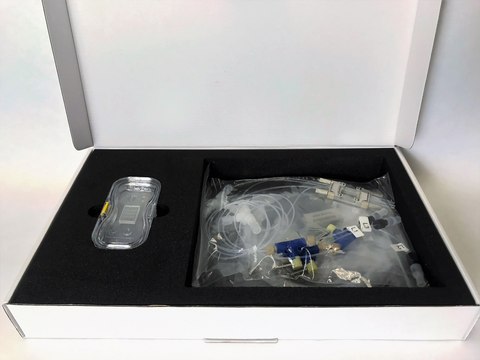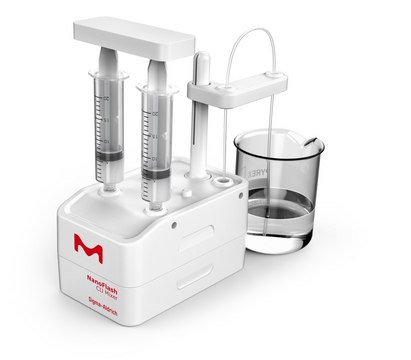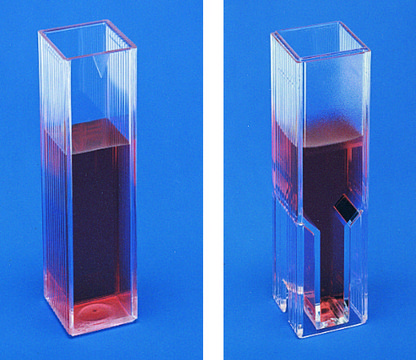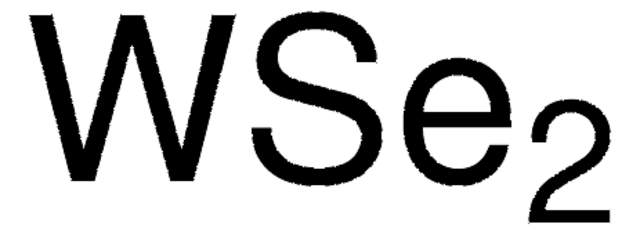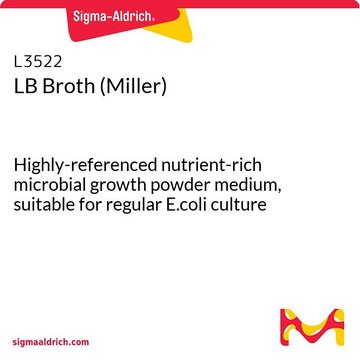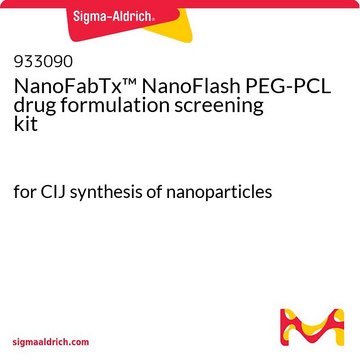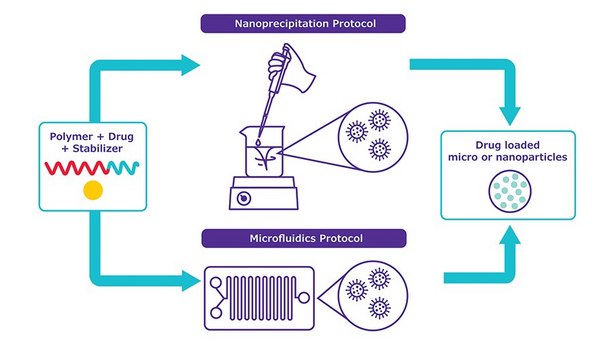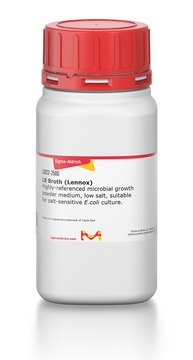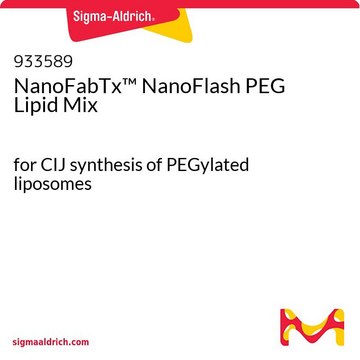推荐产品
储存温度
2-8°C
应用
NanoFabTx™ NanoFlash PEG-PLA drug formulation screening kit is a ready to use nanoformulation kit for flash nanoprecipitation synthesis of PEGylated PLA nanoparticles for drug delivery research applications. This kit contains rationally selected PEGylated PLA polymers and stabilizer, enabling users to screen and select nanoformulations without the need for lenghty trial and error optimization. These PEGylated PLA polymers have been widely used in drug delivery systems for controlled drug release of many different types of therapeutic molecules.
This kit has been curated and designed for flash nanoprecipitiaton (FNP) nanoparticle synthesis using a confined impingement jet (CIJ) mixer, such as the NanoFabTx™ NanoFlash CIJ Mixer, and detailed step-by-step instructions are provided.
This kit has been curated and designed for flash nanoprecipitiaton (FNP) nanoparticle synthesis using a confined impingement jet (CIJ) mixer, such as the NanoFabTx™ NanoFlash CIJ Mixer, and detailed step-by-step instructions are provided.
特点和优势
- Ready-to-use nanoformulation kit for PEGylated nanoparticles
- Step-by-step flash nanoprecipitation protocol
- Create specifically sized, biodegradable, PEGylated PLA nanoparticles
- Maximize the encapsulation of hydrophobic drugs
- Two different PEGylated PLAs are included
- Optimized for 60 nm-150 nm nanoparticles
法律信息
NANOFABTX is a trademark of Sigma-Aldrich Co. LLC
储存分类代码
11 - Combustible Solids
WGK
WGK 3
闪点(°F)
Not applicable
闪点(°C)
Not applicable
法规信息
新产品
Jing Han et al.
Journal of pharmaceutical sciences, 101(10), 4018-4023 (2012-07-11)
Johnson and Prud'homme (2003. AICHE J 49:2264-2282) introduced the confined impingement jets (CIJ) mixer to prepare nanoparticles loaded with hydrophobic compounds (e.g., drugs, inks, fragrances, or pheromones) via flash nanoprecipitation (FNP). We have modified the original CIJ design to allow
Nazila Kamaly et al.
Chemical Society reviews, 41(7), 2971-3010 (2012-03-06)
Polymeric materials have been used in a range of pharmaceutical and biotechnology products for more than 40 years. These materials have evolved from their earlier use as biodegradable products such as resorbable sutures, orthopaedic implants, macroscale and microscale drug delivery
Byung Kook Lee et al.
Advanced drug delivery reviews, 107, 176-191 (2016-06-06)
Poly(d,l-lactic acid) (PLA) has been widely used for various biomedical applications for its biodegradable, biocompatible, and nontoxic properties. Various methods, such as emulsion, salting out, and precipitation, have been used to make better PLA micro- and nano-particle formulations. They are
Verónica Lassalle et al.
Macromolecular bioscience, 7(6), 767-783 (2007-06-02)
The controlled release of medicaments remains the most convenient way of drug delivery. Therefore, a wide variety of reports can be found in the open literature dealing with drug delivery systems. In particular, the use of nano- and microparticles devices
K S Soppimath et al.
Journal of controlled release : official journal of the Controlled Release Society, 70(1-2), 1-20 (2001-02-13)
This review presents the most outstanding contributions in the field of biodegradable polymeric nanoparticles used as drug delivery systems. Methods of preparation, drug loading and drug release are covered. The most important findings on surface modification methods as well as
我们的科学家团队拥有各种研究领域经验,包括生命科学、材料科学、化学合成、色谱、分析及许多其他领域.
联系技术服务部门